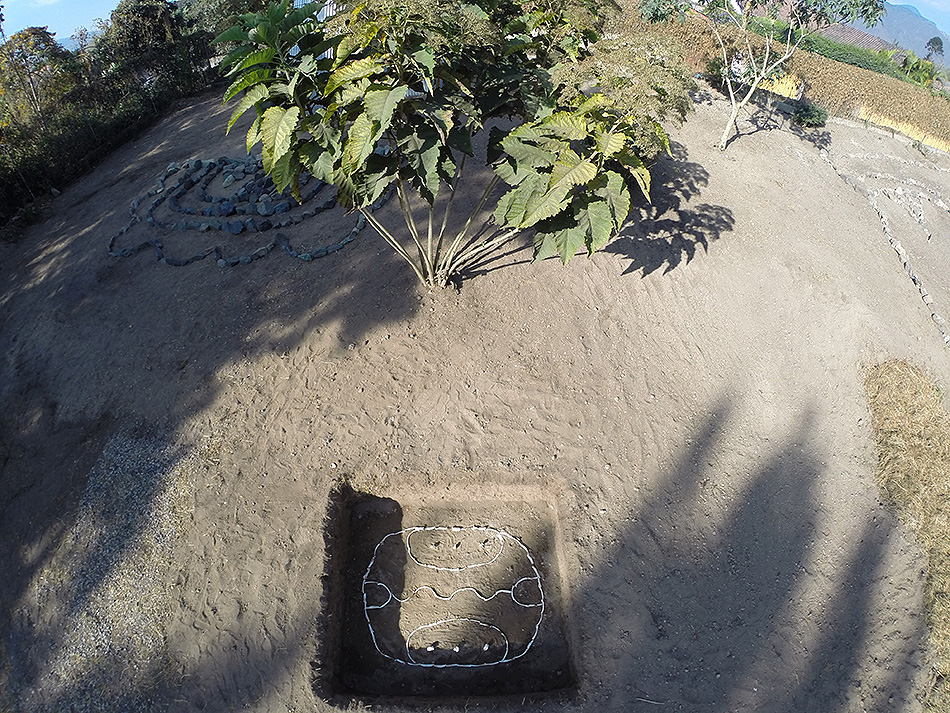
Perfect Language (Bone: Baak), 2015
Bones
80” x 80” x 40”
A decade ago, Yucef Merhi defined a system he called Perfect Language. It is a sensorial metalanguage that can be applied to any language, making it automatically understandable to anyone. Merhi developed this universal language depicting words, mostly nouns, using the material they refer by definition. For example, he displayed the Chinese word for magnet (cítiě / 磁铁) using and arraging 1000 neodymium magnets.
For Perfect Language: Maya, the artist researched and reproduced a set of logograms (Maya glyphs) employing a wide range of materials. He selected elements that for centuries have been part of the Maya culture: earth, cocoa, wood, jade, dyes, beads, etc. Then, he investigated which were the Maya symbols that designate each element; making sculptures and installations that range from 11 inches to 50 foot. To decipher the glyphs represented by Merhi, one must only know that "what you see is what it says".
The selection process of logograms was as rigorous as possible, drawing on the expertise of archaeologists, epigraphist, and academic material. The artist also had the collaboration of botanists, historians, farmers, veterinarians, chefs, carvers, artisans, and experts in various fields.

In the case of Perfect Language (Bone: Baak), the artist used bones to depict the Maya glyph that corresponds to bone. Some of the bones were found in situ (Concepción 41). During the installation, Merhi realized that the shapes of the bones fit within the curved form of the logogram, leading him to question if certain logograms were developed based on the actual object they meant to represent.